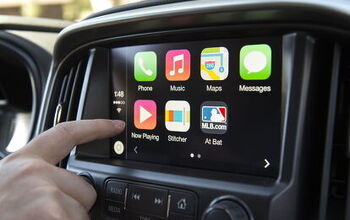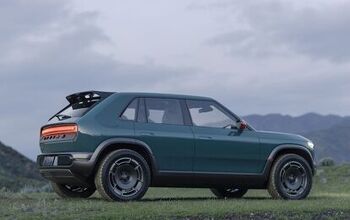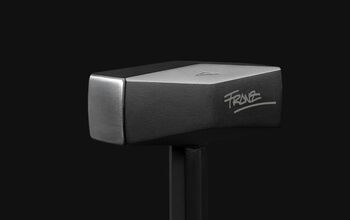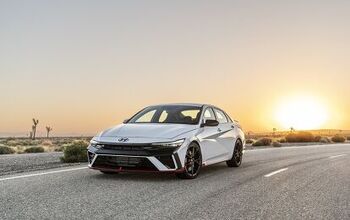Did Government Meddling Cripple The Dodge Dart?
As we come to yet another hiccup in the launch of the Dodge Dart, it’s worth taking a look backwards to examine how we got to this point; the elimination of a second shift at the Dundee, Michigan plant that builds the Dart’s 1.4L FIRE engine, as well as the firing or re-assignment of 58 workers.
As both Ronnie and Michael Karesh noted, the same 1.4T FIRE engine that’s so delightful in the Fiat 500 Abarth is weaksauce in the Dart. The 1.4T’s clunky dual-clutch auto doesn’t help matters either. If it weren’t for government mandated fuel economy targets imposed as a condition of the bailout, that engine – and possibly the Dart – wouldn’t even be here right now.
Just over a year ago, UAW members at the plant had just authorized a strike at the Dundee plant over a change in shift schedules – despite an apparent agreement not to strike, as another condition of the bailout. The FIRE engine, widely panned in the Dart, seems to exist solely to satisfy the requirement that Fiat build a 40 MPG car in America – a requirement that TTAC summarily exposed as bogus, since the agreement stated that the car must get 40 MPG “unadjusted”, or roughly 30 MPG combined in the “real world” fuel economy figures that everyone is familiar with.
But without the 40 MPG Dart, the diminutive FIRE engine and U.S. production of the FIRE engine, Fiat would not have received their 20 percent stake in Chrysler, along with the option to increase their share in 5 percent increments once these milestones (the third being Fiat recording $1.5 billion in revenue outside the NAFTA Zone).
Ronnie hit the nail on the head with his summation that the Dart, as Chrysler’s first product overseen by Marchionne, was at best the victim of a botched launch, and at worst a failure made of cobbled together Chrysler and Fiat parts. But the 1.4T seems to have been a victim of meddling by the current administration instructing car companies to build vehicles consumers don’t want – a charge often leveled at the Chevrolet Volt by its more vocal critics. In this case, it’s not a complex hybrid/electric pseudo-hatch, but an underpowered version of a nicely executed compact car that was hamstrung by political pressure – that may or may not have led to a botching of the car’s launch.
The initial batch of Darts that arrived on dealer lots used the 1.4T or 2.0L non-turbo engine and were largely equipped with stick shifts – popular among “Petrol Hipsters”, but poison for the other 95 percent of American car buyers. The mismatch in product mix has been blamed for the Dart’s slow start. Next up, Sergio Marchionne himself blamed the lack of a 9-speed automatic, telling the media that buyers found the 6-speed dual clutch gearbox to be an oddity. Now it looks like the issue may lie with the FIRE engine itself; too pokey and too small for American tastes, let alone for a 3200 lb car (for comparison, the Fiat 500 Abarth that uses the FIRE engine weighs 2500 lbs and provides fairly rapid acceleration). The irony is that only one model, the 1.4T equipped Dart Aero, actually gets 40 MPG or above. Since the government agreement specified that the 40 MPG car be “produced in commercial quantities” without any concrete definition, it’s impossible to know how many 40 MPG Darts actually made their way into the hands of consumers. Interestingly enough, the Dart Aero is broken out as a separate model on the EPA’s fuel economy website
As a replacement for the FIRE and its capacity at the plant, Chrysler will use Dundee to build the 2.4L Tigershark 4-cylinder engines that will apparently be a much better fit for North American drivers, rather than the small turbo engine that’s more at home in A and B segment Fiat products. The 2.4L hasn’t been rated by the EPA for fuel economy yet – it likely won’t hit the 40 MPG mark, but its smoother, torquier nature is more akin to what American consumers are used to. But if it weren’t for politicians deciding that they knew better, and that filling some nebulous “green car” mandate was a holy task, this whole mess could have been avoided, and the Dart may have had a much better chance to succeeding in an already tough compact car segment.
More by Derek Kreindler
Latest Car Reviews
Read moreLatest Product Reviews
Read moreRecent Comments
- Sobhuza Trooper How is this dumber than a $60,000++ 4WD Crew cab pickup with a 5-foot bed?
- Ajla My maintenance cost is high but I knew that going in.
- TheEndlessEnigma My 2016 FiST has been the most reliable car I've owned.
- MaintenanceCosts I already set out total costs, so this time I'll list what's had to be done on my cars (not counting oil changes, recall, or free services):2019 Bolt (25k mi): new 12v battery, pending tires & battery cooling service2016 Highlander (from 43k to 69k mi): new front rotors, new pads all around, new PCV valve, 2x 12v batteries, light bulbs, pending tires2011 335i (from 89k to 91k): new valve cover gasket, new spark plugs, light bulbs, pending rear main seal1995 Legend (from 185k to 203k): timing belt/water pump, new EGR valve + pipe, struts, strut bushings, drive axles, tie rods, rear control arms, other suspension bushings, coolant hose & brake lines throughout, belts, radiator, valve cover gaskets, new power antenna, 12v battery, coils, spark plugs, tires, rear pads... it's an old car!
- VoGhost Consistent with CR's data. I've spent about $150 total on the Model 3 in six years of ownership, outside of tires.


































Comments
Join the conversation
Japan and Korea, not to mention Germany pour money into their car industry. VW is owned by Lower Saxony, a state in the FRG. So VW should be called "Gov-Wagen"
So: DO you want to discuss the Dart, or diss Obama and the UAW? I don't mind some politics and some good business reporting mixed in with a little flamboyant car snarkiness in the morning -- but good politics and business writing both require more adult approaches than sports writing does. Do it right or you screw your article. You didn't do it right. Too many gratuitous dog whistle talking points borrowed from Fox News. I look forward to your comments regarding Mitt Romney. The pity is; you're probably correct about this Dart's engineering choices. ... but thanks for playing.